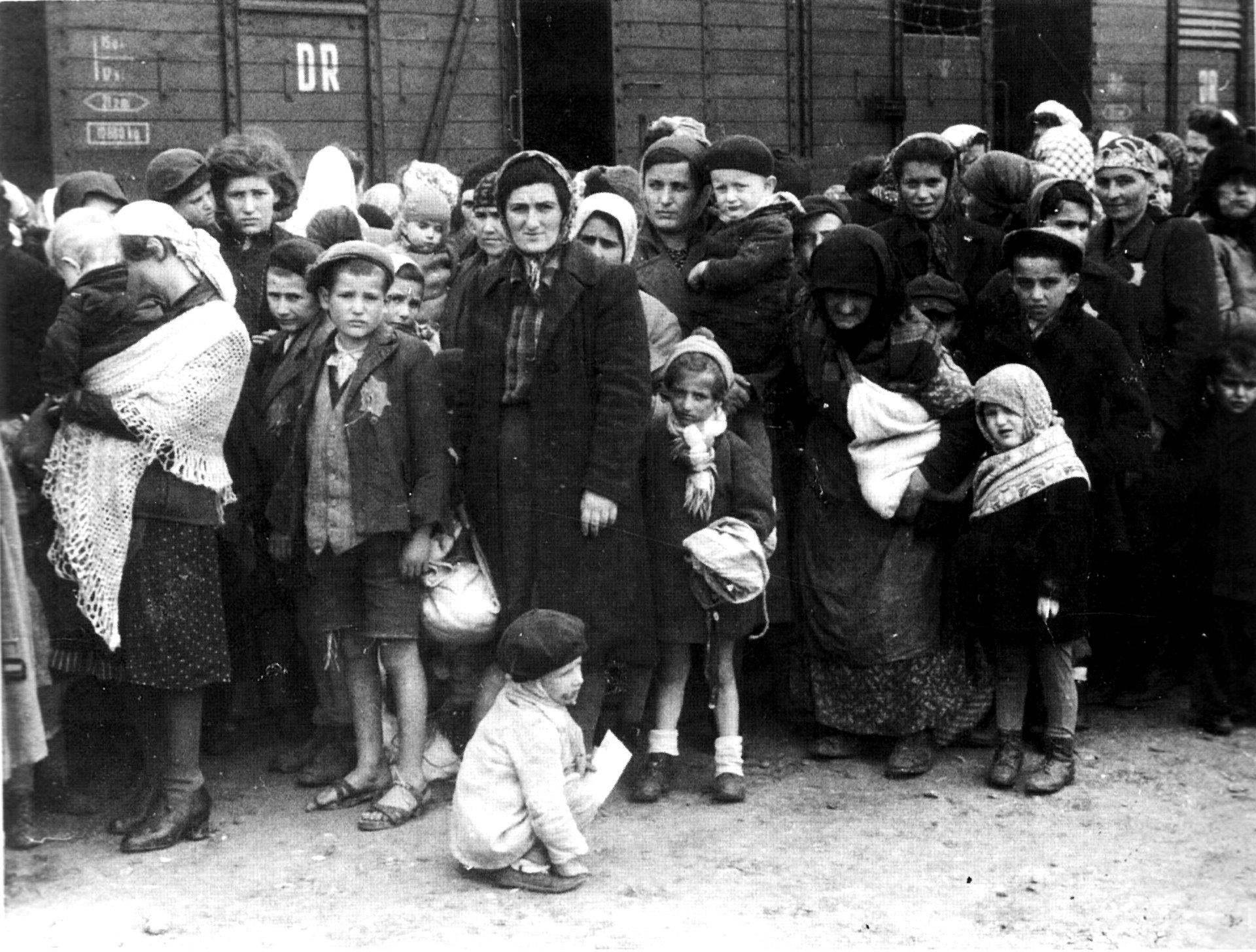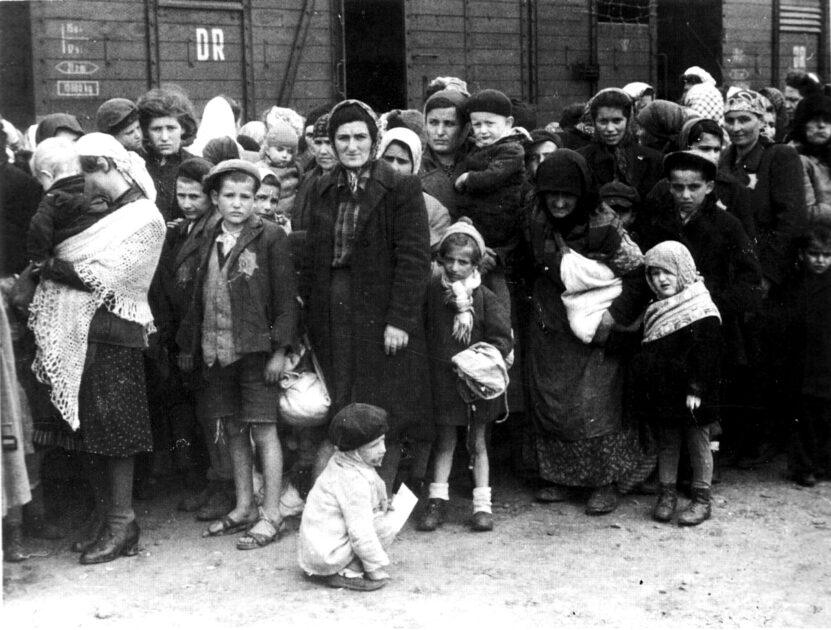






























































Jewish families arriving at Jasenovac Death Camp. Public Domain.
Eighty years have passed since April 1945, when the surviving inmates of the Croatian Nazi camp—Jasenovac—rose in revolt, staged a breakout, and thus brought an end to the existence of the largest death camp in the Balkans during the Second World War. That prompted me to reflect on a dilemma from the past.
As a young author, I was prone to reductive comparisons. In contemplating the civil war in Bosnia and Herzegovina from 1992 to 1995, I wrote a text entitled The Serbian NDH, in which I compared Republika Srpska—on account of the systematic crimes committed against the Bosniak population, for which its wartime leadership is unquestionably responsible—to the criminal puppet creation of the Second World War: the Independent State of Croatia (Serbian: Nezavisna država Hrvatska – NDH). Today, more than fifteen years after that text was written, I better understand what in it was exaggeration—and what was not.
Republika Srpska and the NDH cannot be likened, if only because the former arose from the plebiscitary will of the Serb people during the disintegration of Yugoslavia, at a time when monoethnic political organization had no viable—or even conceivable—alternative. It was not proclaimed in the midst of war, but on the threshold of armed conflict. Unlike the NDH, it was not founded by a foreign power installing a black-shirted fascist clique it had long groomed for that very purpose. Nor was it grounded in racial laws, but in a liberal constitution adopted by a freely elected constituent assembly. Its army was not partisan, but conscripted—of the people—and its officer corps was made up predominantly of former Yugoslav People’s Army personnel. The individuals who led it had not, until shortly before the war, stood at the helm of a movement defined by a clearly articulated ideology of extermination.
And yet, when these differences are set aside, we are left to confront other indisputable truths. The wartime government of Republika Srpska bears direct responsibility for the brutal deaths of more than 20,000 Bosniak civilians; for their dehumanization in media echoing the racist rhetoric of the Ku Klux Klan; for acts of sadistic torture; for the mass rape of women who, in parts of eastern Bosnia, were treated as sexual slaves—bought and sold for barely a hundred German marks; for forced deportations; and for the systematic destruction of Bosniak material and spiritual culture, within which not a single Muslim sacred site survived the war.
There is no doubt that the Serbian people west of the Drina, deeply scarred by the horrors endured between 1875 and 1941, had every reason to believe they were fighting against a new NDH. For, hand on heart, neither Zagreb’s nor Sarajevo’s policies—despite their cheap rhetoric about “European values”—harbored any sincere goodwill toward them, neither in the short nor long term.
But equally, there is no doubt that their own leadership, inspired by the dark, racist, and fundamentally neo-Nazi ideology of Dragoš Kalajić and Dragoslav Bokan, exploited those collective traumas to burden them with the historical weight of Ustasha methods. That comparison remains firm as a rock, no matter how different the historical conditions and origins of Republika Srpska may have been to casually call it the “Serbian NDH.” In that light, let my youthful exaggerations be forgiven—for they were not without foundation.
It is for this reason that the speech of veteran Goran Samardžić before the assembled Serbian students outside the blockaded RTS (Radio Television of Serbia) on April 17 carries such historical weight. Greeting the crowd with “Pomoz’ Bog” (God be with you) and “Es-selamu alejkum,” he then said the following:
“I was wounded in May of ’92 in Sarajevo, not yet 21 years old—about the same age as most of these young people here. My generation either marched into the war in Bosnia or found themselves caught up in it.
Some of us went off to fight, quote-unquote, ‘the Balijas,’ ‘the Turks’—believing, as we were told, that they wanted to establish an Islamic state in the heart of Europe. And we wanted to defend Serbian lands and protect the Serbian people.
In April ’92, the bloody Bosnian cauldron was set ablaze. All sides rushed to stoke the fire—each racing to inflame it more than the other. Our own ‘kitchen’ for spreading hatred and lies was right here, in the building above us—yes, in this very RTS, which even today continues to spread lies and hatred.
My generation believed those lies. We thought we were doing the right thing, that we were on the side of truth and justice—and that the others were evil. And the others believed the same about us. That’s how the wheel of evil began to turn—a wheel that, to this day, has not stopped.”
This reminded me of another, far less known historical piece—not a speech, but a written reflection about Nataša Zimonjić-Čengić, granddaughter of the Metropolitan of Dabar-Bosna, Saint Petar Zimonjić (1866–1941), published in the Trebinje periodical Vidoslov by Archpriest Danilo Dangubić.
“Petar was my grandfather. I remember his love; the warmth of his hand, the safety in his gaze, the joy I felt when I saw him. My father would sometimes take us to Sarajevo, because Pata (as we called him) served there. If I told you that I remember how the Bishop would take us for walks along the Miljacka, holding us gently by the hand…” Nataša recounted to Father Dangubić.
Not long ago, for the first time, I held in my hands the family photo album from the funeral of my great-grandfather, Bogdan Babić, then Director of Forests of the Drina Banovina—buried by none other than Metropolitan Petar. During liturgy in the Sarajevo Cathedral, I always stand near his icon and recall the testimony left behind by Vojislav Kecmanović–Đedo, the first president of the State Anti-Fascist Council for the Liberation of Bosnia and Herzegovina:
“When Metropolitan Zimonjić was being led through Zagreb to his execution site—along with a group of Orthodox priests (I’ve forgotten the name of the place)—a mob of Ustaša scum (Croatian Nazis, editor’s note) jeered at him and spat upon him. Metropolitan Zimonjić, who stood out among that great throng of martyrs—his towering height, silver hair, and ascetic appearance unmistakable—was kneeling from hunger and torture, yet still he offered blessings to both sides of the street, to these monsters of Western European and Christian civilization.”
Archpriest Dangubić’s text is historical in its essence, for it records the historical truth of the martyrdom of his great-grandson, Goran Čengić—son of Nataša. At the outbreak of the war in Bosnia and Herzegovina, the authorities of Republika Srpska armed criminal riffraff and gathered them into so-called “paramilitary formations” to carry out the dirtiest of tasks. One such unit rampaged through the Sarajevo neighborhood of Grbavica. In a grim twist of blasphemy, it was named the White Angels, and at its head stood Veselin Vlahović Batko, a former boxer and nightclub bouncer, who answered directly to the Minister of Internal Affairs of Republika Srpska, Momo Mandić.
When the croatian nazis seized power in Sarajevo in 1941, Metropolitan Petar was offered the chance to flee to Montenegro. He refused, choosing instead to share in the suffering of his flock, just as he had shared in their joys.
In the final decade of the 20th century, as Sarajevo was ravaged by roaming paramilitary bands of psychopathic killers, Goran Čengić—a descendant, no less, of fierce historical adversaries: Deda-aga Čengić, a high Bosniak nobleman from Herzegovina, and Vojvoda Bogdan Zimonjić, one of the Serb rebel leaders against Ottoman rule—did not turn his face away from a sick neighbor.
Here is how Archpriest Danilo Dangubić described it:
“…the sound of footsteps echoes through the stairwell, a fist pounding on a neighbor’s wooden door, a sharp voice yelling something like: ‘Open up!’; the metallic clatter of a Kalashnikov barrel striking the blade of a knife strapped to the executioner’s waist; then the deafening pounding of one’s own heart in the ears—so loud that even the quiet voice of the neighbor they’ve come for is drowned out; and then, the hand, as if by its own will, reaches for the latch and opens the door…
“’What are you doing? Can’t you see the man is ill?’
“In those dark June days of 1992, evil had taken up residence in the Sarajevo neighborhood of Grbavica—and Goran Čengić knew it. He also knew that when he opened that door and uttered the words with which he tried to protect his helpless neighbor, Dr. Husnija Ćerimagić, that evil would come crashing down upon him as well. He knew that facing evil meant only one thing—death.
“And yet, he did not remain on the other side of the door. He did not stay silent, waiting for the evil to pass. He did not dig through his conscience for excuses not to act. He did not lean his sweat-soaked back against the wall in fear and wait for the butchers to drag away a defenseless, sick old man.”
And so, the Metropolitan’s grandson was tortured and killed by men who called themselves the White Angels, inspired by Bokan’s brand of neopaganism. Whoever fails to see the terrifying symbolism in this act—the attempted murder of the Metropolitan’s immortal legacy—and in so many ways, a reenactment of the satanic humiliation he endured on the streets of Zagreb and later in Jasenovac (the largest death camp for Serbs, Jews, and Roma on the territory of the Independent State of Croatia (editor’s note)), will never understand that the comparison of such atrocities to those of the NDH does not arise from malice on the part of the observer, but from the NDH-like darkness within the hearts of the perpetrators.
It is no wonder that fear, panic, and revulsion reign in hearts like theirs at the sight of what is unfolding in the spring of 2025 on the streets of Belgrade and Novi Pazar (a city in Serbia with a predominantly Muslim population). No wonder that the hordes of demonic agitators—those who greet each anniversary of the Jasenovac breakout with sorrow, solely because they have yet to succeed in establishing their own sanctuary of evil—feel fear, panic, and revulsion at the catharsis of a veteran who was wounded in the almost vanished Sarajevo of Petar and Goran.
“I want to send a message to the parents of children from Novi Pazar—do not be afraid. There is no more ‘our’ and ‘your’ children. They are all our children. We, the war veterans, will protect them with our honor and with our lives. No one has the right to harm them. These children, in just the past few months since they awakened, have lifted many of us—yes, even us war veterans. I want to express my admiration and gratitude to the true heroes of our time—our students, our children. Thank you, children!”
Thank you, children. On this anniversary of the breakout from the Jasenovac death camp: never again the NDH. Never again anything that even faintly resembles it.
The post The Self-Liberation of the Jasenovac Death Camp and a New Serbian Catharsis appeared first on CounterPunch.org.
This post was originally published on CounterPunch.org.